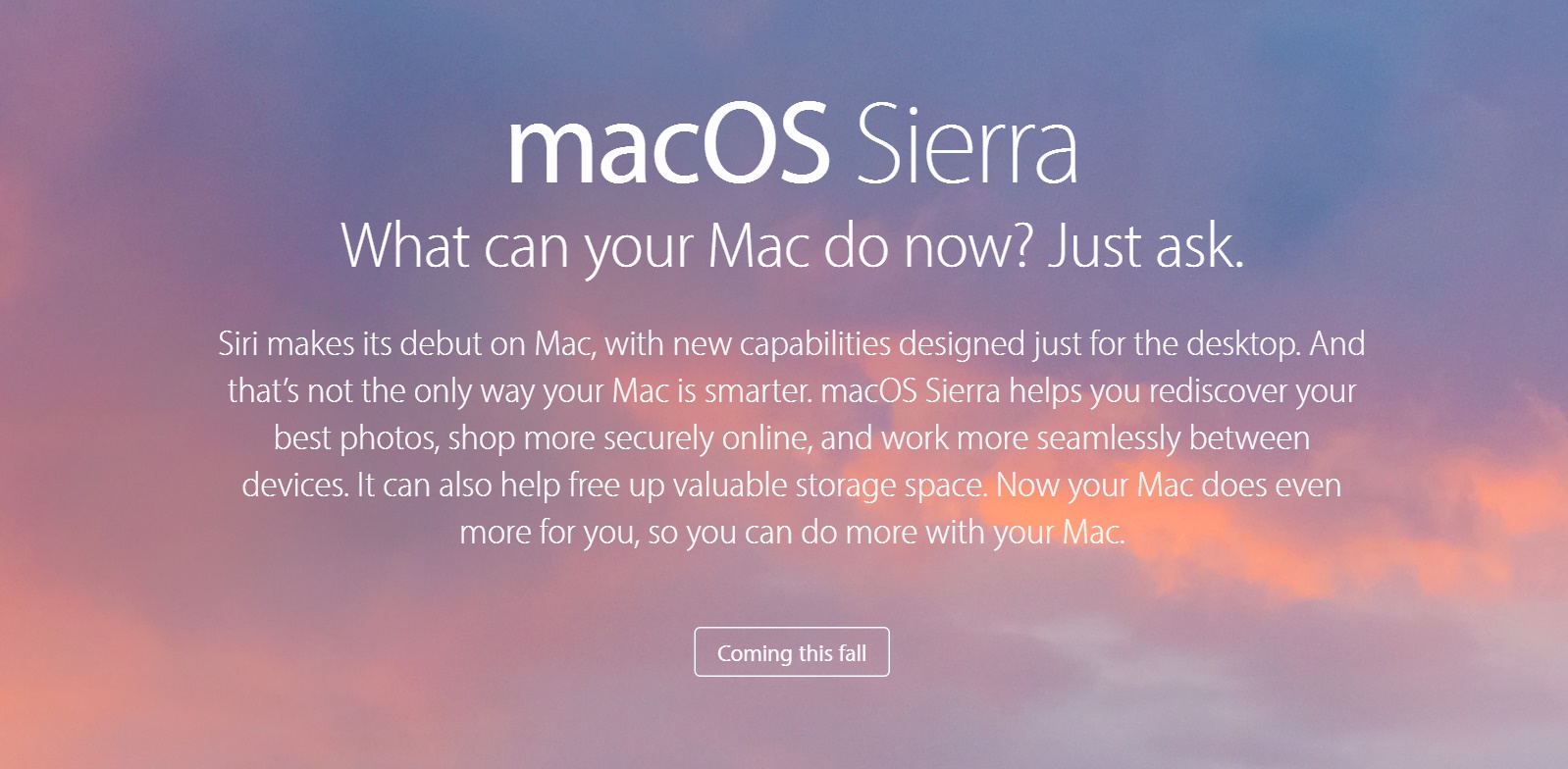Apple macOS Sierra: will your Mac make the list?

Goodbye Mac OS X. Welcome back macOS! Indeed Apple has hit the nail on the head, while in the process of consolidating its operating systems naming convention, by going full-circle. With that said, how many Mac users will actually be able to upgrade to the (quite literally) “brand new” operating system?
From what we have seen at Apple’s WWDC16, Sierra is coming this Fall, to Mac users, with a number of exciting features, including the much anticipated integration of Siri, which will be a big part of the experience, in a similar way as Cortana has been in Microsoft Windows 10. Much like its rival, Apple’s virtual assistant will be providing advanced search features and execute tasks, like sending email and messages, book flights, make dining reservations, and locate files and folders within the local drives, as well as on iCloud.
Apple Pay is another feature that comes straight from iOS, and will also be available to Mac users who want to make purchases online. The rather puzzling aspect of Apple Pay will be in regard to consumers who may want to use Apple Pay on websites displayed on computers other than a MacBook running macOS Sierra.
Apple has not released a definitive compatibility list of Macs that will be supporting macOS Sierra, however, it goes without saying that, just as it was true for OS X El Capitan, a number of older Macs will not be able to upgrade, including many MacBook Pros, MacBook Air, iMacs, Mac Minis, and Mac Pros, released prior to 2010-2007.
More specifically, owners of 2015 MacBooks, 2008 MacBooks, Mid-2007 MacBook Pros, late 2008 MacBook Air, early 2009 Mac Minis, mid-2007 iMacs, and 2008 Mac Pros, should be able to upgrade to Sierra, with one caveat: the new Apple File System (APFS), whose architecture is built on strong encryption, and optimized for flash and SSD storage, rather than HDD. It’s unlikely that Apple would do anything to keep a sizable chunk of its Mac user market share from upgrading to Sierra, but considering the emphasis on encryption, there is a small chance that, at the very least, Apple may require users to upgrade their storage capabilities from HDD to flash or SDD, in the face of compatibility.